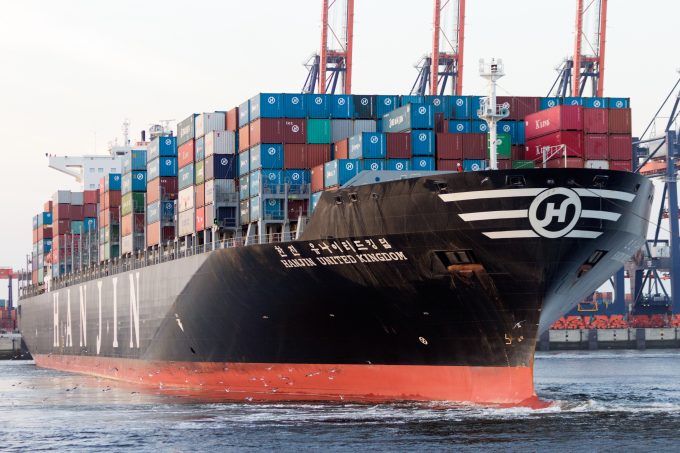
Trembles in Asia have returned with a vengeance, and reverberate around the world. As a disordered bankruptcy of Hanjin Shipping becomes increasingly likely, we are reminded how badly contagion risk could impact global economies if it is not properly managed.
The problem goes to the heart of capitalism, globalisation and the concept of moral hazard – although bankers and shipping executives still hope somebody will come to the rescue.
There are significant differences between now and 20 years ago, of course, but, sadly perhaps, central banks and politicians seem to have run out of ammunition, and the demise of Hanjin Shipping could end up being a leading indicator for financial markets.
Hopefully, I am wrong.
1997-credit crunch
1997 was not the end of world. Despite the subsequent tech bubble, whose powerful effects fully materialised at the beginning of the 21st century, the turmoil that characterised the late 1990s was broadly contained. One reason was that fiscal policies were less constrained in the post-Clinton era; another that the risk-free rate hovered several basis points above today’s levels, leaving central banks with plenty of room for manoeuvre, up to 2014 or so.
While Alan Greenspan and his crew did nothing to prevent the financial and economic disaster that began to unfold in mid-2007 – keeping interest rates far too low for far too long, among other things, while supporting banking deregulation – the trading and the financial worlds continue to pay a hefty price to this day, with stagnation being the chief enemy more than two decades after the first cracks in Asia had become apparent.
2009-2016: container shipping a leading indicator?
Only a few days from the eighth anniversary of Lehman Brothers’ demise – which contributed to pushing down stock markets to multi-year lows in March 2009, when the current bull market started – the wind blowing from Asia heralds a cold winter, with an Indian Summer spoiled by talk of a likely gradual tightening from the US Federal Reserve.
This matters a lot, because the apparently inevitable bankruptcy of Hanjin Shipping recently gave a short-term boost to freight rates, but it similarly indicates that a financial/economic meltdown could be around the corner.
As with banks in the liquidity crisis that began in mid-2007, the asset side of the balance sheet of container shipping companies reveals highly illiquid assets. These are not junk loans and mortgages, but are represented by a slew of vessels whose value should reflect that of scrap metal, in most cases, if they were liquidated overnight.
The abnormally low current-to-fixed assets ratio in container shipping has traditionally been seen as a side issue by the main operators, which have paid little attention to the way they managed shareholders’ funds. Now, this is not only a big problem for shipowners and their funding plans, but forwarders are not immune and neither are box terminal operators and shippers.
Who is to blame?
You can blame China, of course. However, as the debate about the devaluation of the yuan rages on – this is one of the biggest systemic risks embedded in the financial markets, spurred by depressed commodity prices – the spotlight in shipping circles and around the globe is on the fallout of Hanjin Shipping, which is raising peanuts from the affiliates of its parent, Hanjin Group, in order to prevent contagion along the supply chain.
News today is a tad more encouraging, yet a couple of hundred million dollars is small change, given that the line likely needs more than half a billion dollars to pay port fees and other dues to sort out the mess it finds itself in. The value of Hanjin Shipping is meaningless once its fixed assets are booked at liquidation value.
To some, the decision the South Korean government will ultimately have to take with regard to Hanjin Shipping appears obvious: a restructured Hyundai Merchant Marine (HMM) will emerge as a sole winner, with the blessing of politicians. State-owned lenders didn’t bow to Hanjin’s requests, but played a key role in the bail-out of HMM, which will become its national champion.
However, this situation could have dire consequences on confidence in global trades of consumer goods, and comes at a critical time, given the upcoming holiday season.
Incidentally, aside from Hanjin, Germany’s Hapag-Lloyd is also sailing against the wind, France’s CMA CGM needs to cut costs to stay the course and some of the Japanese box liners could be forced to merge.
While most container shipping companies remain in the red, Maersk Line, the world’s largest player in the industry, is expected to announce a restructuring any day, but there are clear signs of unease in the stock markets.
The Dow Jones Industrial Average dropped almost 400 points on Friday, while other US indexes were also hammered. Futures prices point to another challenging session today in North America, while trading was particularly challenging in Asia and Europe earlier today.
Will the bankruptcy of Hanjin be a turning point?
The first-ever losses Maersk Line reported, in early 2010 for fiscal 2009, lagged the bottom of the financial markets, but back then monetary and fiscal policies had about a (lost) decade to manifest themselves, propping up asset prices, with bonds and equities benefiting the most. These two asset classes have been sending us diverging signals for some time.
Moreover, the soaring levels of bad debt in some key European countries remains a near-insurmountable problem if large cash calls do not ensue, while the number of sour shipping loans still sitting on a few banks’ balance sheets is disturbing.
Undoubtedly, the fortunes of the container shipping industry and consumer spending – now the main global driver of value – are intimately tied: as growth remains fragile around the globe, the events that have characterised the major liners worldwide this year indicate that my worst-case scenario for interest rates could play out by the end of 2017.



No comments:
Post a Comment